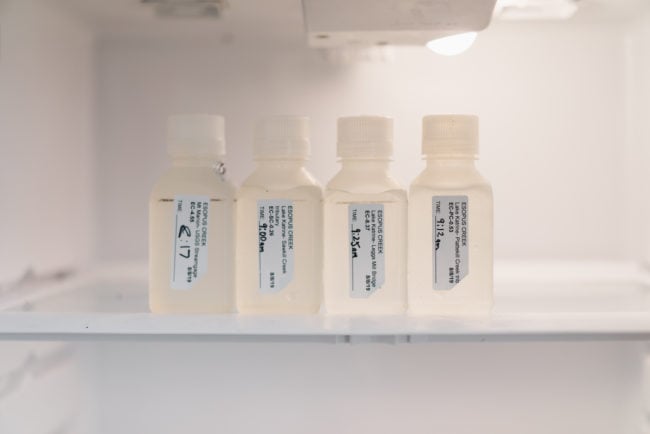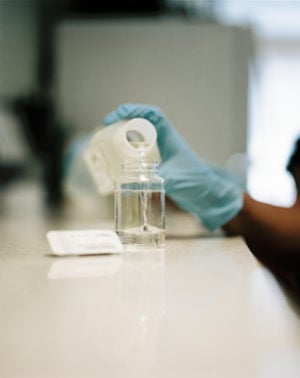Riverkeeper makes extensive water quality dataset available to students and researchers

Photo: Gilles Uzan
View more images on our Flickr site
Entero monitoring data tracks 400 locations in NYC and the Hudson Valley
When and where is it safe to swim? To help answer that question, for more than 10 years, Riverkeeper has been advising, organizing, and assisting community scientists to collect Enterococcus (Entero) data from tributaries to, and local waterfront areas of, the Hudson River. Entero is a fecal indicator bacteria recommended by U.S. Environmental Protection Agency to define where fecal contamination from human sewage, wildlife, pet waste or other sources puts people at risk of exposure to pathogens.

Photo: Gilles Uzan
Riverkeeper’s community-based Entero monitoring started a regional movement. We and our partners have sampled the headwaters of the Hudson at Lake Tear of the Clouds in the Adirondacks, the kayak launches of New York Harbor, and many, many places in between. As of 2022, more than 50 academic, community and watershed groups have monitored approximately 400 locations in about two dozen waterways and waterfronts. Riverkeeper has relied heavily on these monitoring data in our state and local advocacy for clean water policies and funding, with success.
Riverkeeper has participated in multiple partnerships to analyze the monitoring data from various angles and spatial and temporal scales.
We have developed hypotheses, designed studies, and discussed conclusions with community samplers, academic experts, and resource managers. In doing so, we and our partners have approached the limits of what published scientific literature tells us about Entero in our local waterways.
There is much more to learn from the Entero monitoring data. Riverkeeper’s community science mantra has long been, “Let the data do the talking.” The data has always been available on the Riverkeeper website, but never in a downloadable format. For the data to have full voice, it needs to be easily and openly accessible. Riverkeeper is in the unique position of managing the region’s longest running and most spatially expansive Entero dataset, and we are now using our platform to make this dataset widely and easily accessible.
By making the data openly accessible, we will be opening the door for more students and researchers to explore questions about Enterococcus, sewage pollution, tributary ecology, and more. People may use the dataset on its own or combine it with other data sources. They may design experimental approaches or new studies based on our results, or crunch the numbers in new ways. (Some of our research questions are listed on our website.) The data is shared under a Creative Commons Attribution-Noncommercial-ShareAlike 4.0 (CC BY-NC-SA 4.0) license. Of course, we do not endorse all uses or conclusions, but we want to hear about the work that the data inspires, and we encourage users to share their results with us!
We expect to benefit from providing an open data source. The uses of the data will not be limited by our capacity to engage, as they have been in the past. Studies based on the data can teach us about Enterococcus sources in these tributaries; Enterococcus ecology in general (e.g., persistence, transport); regional and specific tributary ecology; and more. We hope that more research will put the data into action for advocacy, in ways yet to be imagined.
Learn more about the Community Science Open Dataset here.
Explore the data at riverkeeper.org/water-quality/citizen-data.
If you would like to know more, contact Sebastian Pillitteri ([email protected]) or Dan Shapley ([email protected]).
